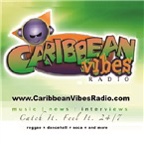Why Soca Music Makes You Move
Written by Admin on March 5, 2025
Why Soca Music Makes You Move: The Irresistible Groove of the Caribbean
Soca music, with its pulsating rhythms, infectious melodies, and high-energy vibes, has an undeniable ability to make people move. Originating in the Caribbean, specifically Trinidad and Tobago, soca (short for "soul of calypso") is more than just a genre of music—it’s a cultural phenomenon that embodies joy, freedom, and celebration. But what is it about soca music that makes it so irresistible? Why does it compel even the most reluctant dancers to tap their feet, sway their hips, and jump to their feet? Let’s dive into the magic of soca and explore why it has such a powerful effect on our bodies and souls.
The Rhythmic Heartbeat of Soca
At the core of soca music is its rhythm, a driving force that seems to sync perfectly with the human heartbeat. Soca is built on a foundation of fast-paced, syncopated beats, often driven by booming basslines, lively percussion, and the unmistakable sound of steel pans. This rhythmic structure is designed to mimic the natural cadence of movement, making it almost impossible to stay still. The tempo of soca typically ranges from 100 to 135 beats per minute (BPM), a range that is scientifically proven to energize and excite listeners. This tempo is not only ideal for dancing but also triggers the release of endorphins, the body’s natural "feel-good" chemicals, which explains why soca music often leaves people feeling euphoric.
The Call-and-Response Tradition
Soca music is deeply rooted in African and Caribbean traditions, particularly the call-and-response style of singing. This interactive element creates a sense of community and participation, drawing listeners into the music. When a soca artist shouts, "Hands up!" or "Wave your flag!" the crowd instinctively responds, creating a collective energy that is both exhilarating and unifying. This call-and-response dynamic not only engages the audience but also encourages physical movement, as people clap, jump, and dance in unison. It’s a musical conversation that invites everyone to be part of the experience.
The Power of the Groove
Soca’s groove is another key factor in its ability to make people move. The genre often features a "riddim," a repetitive instrumental pattern that forms the backbone of the song. This repetition creates a hypnotic effect, locking listeners into the music and allowing them to lose themselves in the rhythm. The combination of syncopated beats, melodic hooks, and layered instrumentation creates a rich, textured sound that is both uplifting and irresistible. Whether it’s the playful bounce of a road march or the sultry sway of a groovy soca tune, the groove of soca music speaks directly to the body, bypassing the mind and compelling movement.
The Lyrics of Celebration
Soca music is inherently celebratory. Its lyrics often focus on themes of joy, freedom, love, and living life to the fullest. Songs like Machel Montano’s "Happiest Man Alive," Kes’s "Hello," and Bunji Garlin’s "Differentology" are anthems of positivity and empowerment. These uplifting messages resonate deeply with listeners, inspiring them to let go of their inhibitions and embrace the moment. Soca music is the soundtrack to Carnival, a time of revelry and release, and its lyrics reflect this spirit of uninhibited celebration. When you hear soca, you’re not just listening to music—you’re being invited to join a party.
The Cultural Connection
For many people, especially those from the Caribbean diaspora, soca music is more than just entertainment—it’s a connection to their roots. The genre carries the history, traditions, and spirit of the Caribbean, making it a powerful cultural force. For those who grew up with soca, the music evokes memories of family gatherings, Carnival celebrations, and community events. Even for those new to the genre, soca’s infectious energy and universal themes of joy and freedom make it easy to connect with. This cultural resonance adds an emotional layer to the music, making it even more compelling and moving.
The Science of Movement
From a scientific perspective, soca music’s ability to make people move can be explained by its impact on the brain. The fast tempo, rhythmic patterns, and repetitive melodies activate the brain’s motor cortex, which controls movement. At the same time, the music stimulates the release of dopamine, a neurotransmitter associated with pleasure and reward. This combination of physical and emotional stimulation creates a feedback loop that encourages dancing and movement. In other words, soca music doesn’t just make you want to dance—it makes you feel good while you’re doing it.
The Ultimate Feel-Good Genre
In a world that can often feel heavy and stressful, soca music offers a much-needed escape. Its infectious energy, uplifting lyrics, and irresistible rhythms create a sense of joy and freedom that is hard to resist. Whether you’re at a Carnival fete, a soca concert, or simply listening at home, soca music has a way of lifting your spirits and getting you on your feet. It’s a reminder to let go, have fun, and celebrate life.
So the next time you find yourself moving to the beat of a soca song, don’t fight it—embrace it. Let the rhythm take over, and allow yourself to be swept away by the magic of soca. After all, as the saying goes, "If you can’t move to soca, you can’t move at all!"


